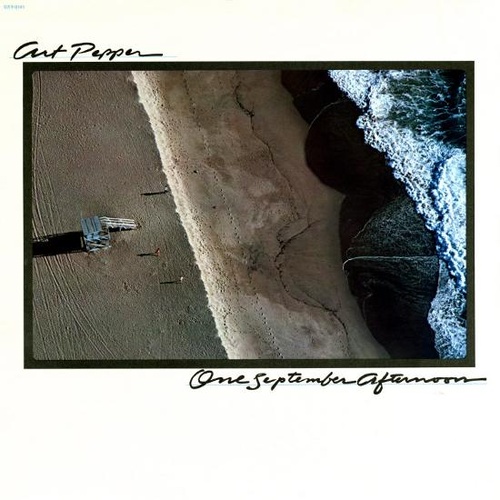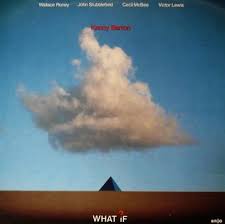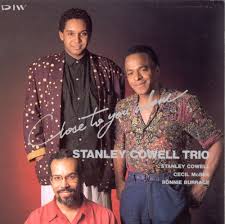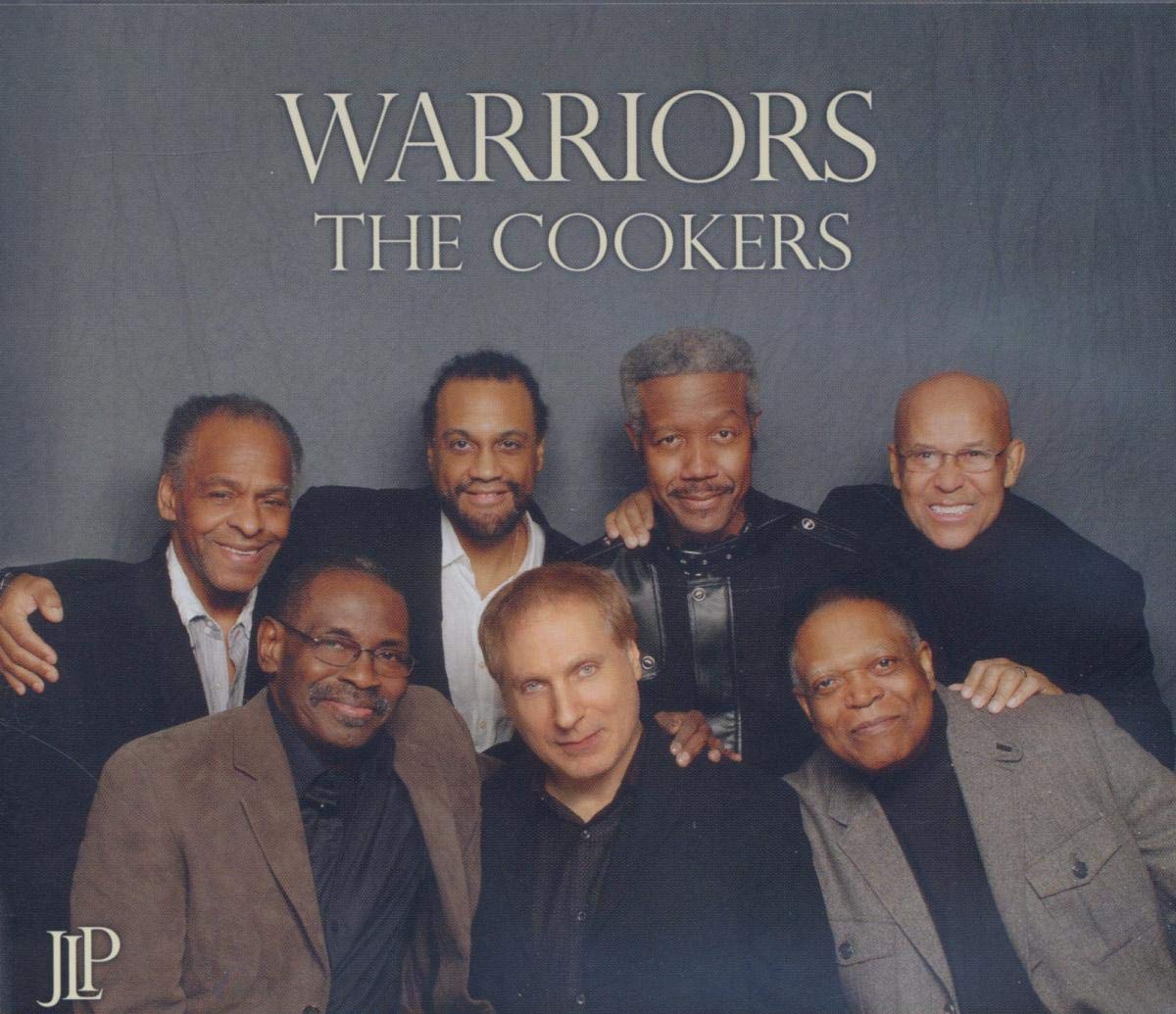Close To You Alone – Cecil McBee
This tender ballad is one of Cecil McBee’s most frequently recorded songs. We have Cecil's bass line transcriptions available for four recordings.
- Recording: Chico Freeman - Spirit Sensitive
- Recorded on: September, 1979
- Label: India Navigation (IN 1045)
- Concert Key: D-flat
- Vocal Range: , to
- Style: Ballad
- Tenor Sax - Chico Freeman
- Piano - John Hicks
- Bass - Cecil McBee
- Drums - Billy Hart
Video
- Description
- Historical Notes
- Solos
- Piano Corner
- Bass Corner
- Drum Corner
- Guitar Corner
- Inside & Beyond
- Minus You
Close To You Alone is a great place to start when exploring the compositions of Cecil McBee. This beautiful, tender ballad is a lot simpler than many of his other songs, and it’s been recorded many times over the past four decades.
The melody is quite lyrical—in fact, lyrics were added later by Cecil’s wife, vocalist Verena McBee— (Just Close To You Alone and the changes are largely based on II-V7 progressions. However, there are a few distinctive quirks of the form and changes that really identify this as a Cecil McBee composition. The A and C sections are extended to 10 measures long, with stepwise ascending chords in the 7th and 8th measures. On many recordings, these measures have syncopated bass figures that add a bit of groove, breaking up the ballad 2-feel in the rest of the song.
The bridge melody and changes are a bit more unpredictable than the A section; downward stepwise motion in the bridge changes mirrors the rising changes in the “groove” part of the A section. The D♭maj7(♮11) in the third measure of the bridge doesn’t function as a tonic chord, but as a passing chord in the descending sequence toward B♭m9 in the fifth measure.
On this recording, saxophonist Chico Freeman plays the melody in a high register on the A sections, descending to the lower octave on the bridge. His interpretation of the melody is expressive but relatively simple, without much embellishment on the in head.
Cecil is a true bass line master: check out the Bass Corner notes for a description of the bass transcription.
The melody is quite lyrical—in fact, lyrics were added later by Cecil’s wife, vocalist Verena McBee— (Just Close To You Alone and the changes are largely based on II-V7 progressions. However, there are a few distinctive quirks of the form and changes that really identify this as a Cecil McBee composition. The A and C sections are extended to 10 measures long, with stepwise ascending chords in the 7th and 8th measures. On many recordings, these measures have syncopated bass figures that add a bit of groove, breaking up the ballad 2-feel in the rest of the song.
The bridge melody and changes are a bit more unpredictable than the A section; downward stepwise motion in the bridge changes mirrors the rising changes in the “groove” part of the A section. The D♭maj7(♮11) in the third measure of the bridge doesn’t function as a tonic chord, but as a passing chord in the descending sequence toward B♭m9 in the fifth measure.
On this recording, saxophonist Chico Freeman plays the melody in a high register on the A sections, descending to the lower octave on the bridge. His interpretation of the melody is expressive but relatively simple, without much embellishment on the in head.
Cecil is a true bass line master: check out the Bass Corner notes for a description of the bass transcription.
Chico Freeman recorded Close To You Alone again in July 1980 on his album “The Search,” with a similar personnel but with Kenny Barron on piano. Cecil had played on Chico’s debut album as a leader, “Morning Prayer” from 1976. Other recordings by Cecil in 1979 include his own album “Alternate Spaces” with Chico, as well as Abdullah Ibrahim’s “African Marketplace.”
Take a look at Cecil McBee's bass lines, and you'll see he's a master at constructing them. Our Bass Transcription shows Cecil’s lines on the in head. He plays a relatively simple 2-feel on the A and C sections, breaking it up with syncopated root-and-5th figures in measures 7 and 8 of each section. On the bridge he switches to a more embellished 4-feel.
Related Songs
Email Send Close To You Alone to a friend
Send this page to a friend via email. Add your name or email in the first field. In the second, add one or more email addresses, separated by a comma.
- Recording: Art Pepper - One September Afternoon
- Recorded on: September 5, 1980
- Label: Galaxy (5141)
- Concert Key: D-flat
- Vocal Range: , to
- Style: Ballad
- Alto Sax - Art Pepper
- Piano - Stanley Cowell
- Bass - Cecil McBee
- Drums - Carl Burnett
0:00
0:00
Buy MP3
Video
- Description
- Historical Notes
- Solos
- Piano Corner
- Bass Corner
- Drum Corner
- Guitar Corner
- Inside & Beyond
- Minus You
This recording is a bit slower than the first version by Chico Freeman (click on album cover, left). Art Pepper embellishes the melody quite a bit, filling in around the longer notes especially in the second A and C sections of the in head. After a piano solo on the two A sections, he plays the head out from the bridge, essentially improvising around the melody.
Check out the Bass Corner notes for a description of the bass transcription.
Check out the Bass Corner notes for a description of the bass transcription.
Cecil McBee played on three Art Pepper albums, of which “One September Afternoon” is the third. The second, “Winter Moon,” was recorded on the two days before the “One September Afternoon” session and features the same lineup plus a string section. Stanley Cowell also played on “Art Pepper Today,” the first of Art’s albums with Cecil from 1978, with Roy Haynes on drums. The first recording with Cecil and Stanley Cowell together was trumpeter Charles Tolliver’s “Live At Slugs” in 1970.
Our Bass Transcription shows what Cecil plays on the whole track. His line here is mostly an embellished 2-feel, often leading into the first or third beat with an eighth note or two stepwise triplets. In this version, he doesn’t play syncopated figures in the 7th and 8th measures of the A and C sections like on most recordings. He plays pedal-like figures in the 7th measure of each bridge, and a similar line leading into the second bridge.
Related Songs
Email Send Close To You Alone to a friend
Send this page to a friend via email. Add your name or email in the first field. In the second, add one or more email addresses, separated by a comma.
- Recording: Kenny Barron - What If?
- Recorded on: February 17, 1986
- Label: Enja (5013)
- Concert Key: D-flat
- Vocal Range: , to
- Style: Ballad
- Piano - Kenny Barron
- Bass - Cecil McBee
- Drums - Victor Lewis
0:00
0:00
Buy MP3
Video
- Description
- Historical Notes
- Solos
- Piano Corner
- Bass Corner
- Drum Corner
- Guitar Corner
- Inside & Beyond
- Minus You
Kenny Barron’s trio version is yet another kind of ballad interpretation. There is an implied double-time feel in much of the head as well as throughout Kenny’s solo, though the trio never goes into pure double-time swing. Kenny increasingly embellishes and fills in around the melody as the song progresses. There is a coda which tags the last four measures.
Check out the Bass Corner notes for a description of the bass transcription.
Check out the Bass Corner notes for a description of the bass transcription.
"What If" was recorded at the legendary Van Gelder Studio in Englewood Cliffs.
This album includes the first recording of Kenny Barron’s Voyage, one of the more recent songs to become a jam session staple. Kenny’s second Enja album as a leader, "What If?" was also his third as a leader recorded at the Van Gelder Studio in Englewood Cliffs, New Jersey. Cecil McBee played on two other Kenny Barron albums: “Landscape” in 1984 and “Live At Fat Tuesdays” in 1988.
This album includes the first recording of Kenny Barron’s Voyage, one of the more recent songs to become a jam session staple. Kenny’s second Enja album as a leader, "What If?" was also his third as a leader recorded at the Van Gelder Studio in Englewood Cliffs, New Jersey. Cecil McBee played on two other Kenny Barron albums: “Landscape” in 1984 and “Live At Fat Tuesdays” in 1988.
Our three-page Bass Transcription shows Cecil’s playing on the entire track. His lines for the piano solo, on the A sections and bridge of the second chorus, are written in double time. Cecil begins with a quite simple 2-feel, but embellishes increasingly through the head and piano solo. In the final C section he returns to the simpler 2-feel. The 7th and 8th measures of each A and C section have “groove” figures; each section is different here, but most of them are in the implied double-time feel. Some of these “groove” figures are in double stops—roots and fifths.
Related Songs
Email Send Close To You Alone to a friend
Send this page to a friend via email. Add your name or email in the first field. In the second, add one or more email addresses, separated by a comma.
- Recording: Stanley Cowell - Close To You Alone
- Recorded on: August 2, 1990
- Label: DIW (6003)
- Concert Key: D-flat
- Vocal Range: , to
- Style: Ballad
- Piano - Stanley Cowell
- Bass - Cecil McBee
- Drums - Ronnie Burrage
Video
- Description
- Historical Notes
- Solos
- Piano Corner
- Bass Corner
- Drum Corner
- Guitar Corner
- Inside & Beyond
- Minus You
Another trio version, this one a little slower than Kenny Barron’s. Stanley Cowell embellishes and improvises around the melody just as much, but without an implied double-time feel except in the second chorus bridge, where there is a double-time swing feel in the drums. Cecil plays an arco solo on the A sections of the second chorus. Check out the Bass Corner notes for a description of the bass transcription.
Recorded in Tokyo, this album is the only recording of Stanley Cowell with drummer Ronnie Burrage. Ronnie had recorded with Cecil McBee once before, on Chico Freeman’s 1981 album “Destiny’s Dance.” “Close To You Alone" was the third Cowell album with McBee; the other two, “Equipoise” and “New World”, were recorded in 1978.
Our transcription includes Cecil’s bass lines for both the in and out melodies. Cecil plays a strongly embellished 2-feel on the in head. Each of his “groove” figures in the 7th and 8th measures of the A and C sections are again different: double stops in the first A and C, and root/fifth lines in the second A. He plays similar “groove” figures in the 2nd through 4th measures of the bridge. He leads into the bridge with pedal figures, as he does on the Art Pepper recording, with similar figures in the 7th measure of the out bridge. Though the drums play a double-time feel in the out bridge, this section is written at the same tempo as the rest of the song; Cecil doesn’t embellish his lines as much here as in the Kenny Barron recording.
Related Songs
Email Send Close To You Alone to a friend
Send this page to a friend via email. Add your name or email in the first field. In the second, add one or more email addresses, separated by a comma.
- Recording: The Cookers - Warriors
- Recorded on: January 19-20, 2010
- Label: Jazz Legacy Productions (JLP 1001009)
- Concert Key: D-flat
- Vocal Range: , to
- Style: Ballad
- Trumpet - Eddie Henderson, David Weiss
- Alto Sax - Craig Handy
- Tenor Sax - Billy Harper
- Piano - George Cables
- Bass - Cecil McBee
- Drums - Billy Hart
0:00
0:00
Buy MP3
- Description
- Historical Notes
- Solos
- Piano Corner
- Bass Corner
- Drum Corner
- Guitar Corner
- Inside & Beyond
- Minus You
This arranged version is an alto sax feature for Craig Handy. There is a written intro; our clip starts at the beginning of the head. On this recording, the rhythm section shows yet another way to interpret a ballad: a triplet-based 12/8 feel, starting in the last measure of the first A section. Handy plays the melody expressively, but with relatively little embellishment, recalling Chico Freeman’s interpretation from 31 years earlier.
A live recording of The Cookers playing this arrangement is available on YouTube (see video above). That version, from Buenos Aires in 2016, has a slightly different lineup from this recording: Eddie Henderson is not present, and Donald Harrison and Stanley Cowell replace Craig Handy and George Cables, respectively. Harrison embellishes the melody much more than Handy on the studio recording, and Cecil’s bass line is also more embellished. On the in head, the 12/8 feel only appears in the bridge; the rhythm section returns to this feel for the solos.
Related Songs
Email Send Close To You Alone to a friend
Send this page to a friend via email. Add your name or email in the first field. In the second, add one or more email addresses, separated by a comma.
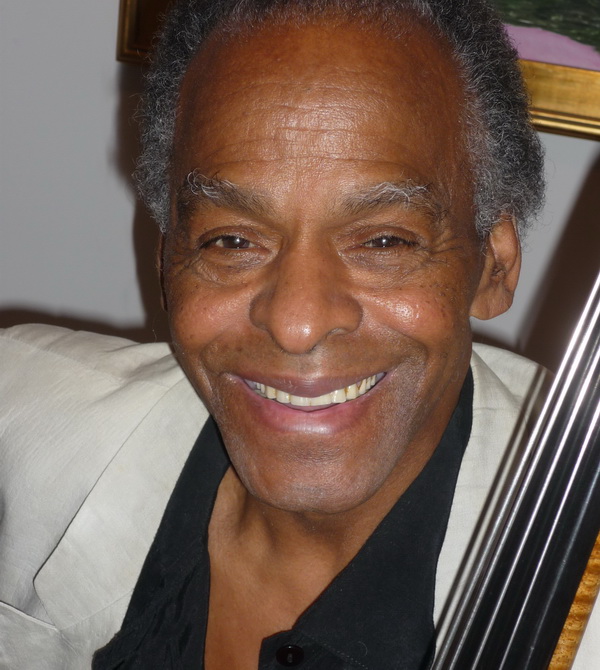
Cecil McBee
born on May 19, 1935
From the time he first arrived in New York City in 1964, Cecil McBee has remained one of the most in-demand bassists in jazz, appearing on hundreds of influential recordings as well as in clubs and concert halls throughout the world. During this same span of five decades, McBee has also become a celebrated composer and teacher, leading his own ensembles and earning a distinguished professorship at the New England Conservatory in Boston, where he has taught for over 25 years. Read more...
There was a problem.
...


